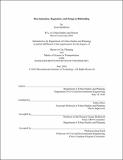| dc.contributor.advisor | Jinhua Zhao. | en_US |
| dc.contributor.author | Middleton, Scott (Scott Russell) | en_US |
| dc.contributor.other | Massachusetts Institute of Technology. Department of Civil and Environmental Engineering. | en_US |
| dc.date.accessioned | 2018-09-17T14:51:24Z | |
| dc.date.available | 2018-09-17T14:51:24Z | |
| dc.date.copyright | 2018 | en_US |
| dc.date.issued | 2018 | en_US |
| dc.identifier.uri | http://hdl.handle.net/1721.1/117829 | |
| dc.description | Thesis: M.C.P., Massachusetts Institute of Technology, Department of Urban Studies and Planning, 2018. | en_US |
| dc.description | Thesis: S.M. in Transportation, Massachusetts Institute of Technology, Department of Civil and Environmental Engineering, 2018. | en_US |
| dc.description | This electronic version was submitted by the student author. The certified thesis is available in the Institute Archives and Special Collections. | en_US |
| dc.description | Cataloged student-submitted from PDF version of thesis. | en_US |
| dc.description | Includes bibliographical references (pages [159]-167). | en_US |
| dc.description.abstract | In the past decade transportation network companies (TNCs) like Uber and Lyft have replaced, supplemented, and disrupted traditional modes of transportation. The rapid growth of these companies makes equitable access to their platforms an issue that is simply too big to ignore. Indeed, these ridehailing services have the potential extend an ugly legacy of discrimination in transportation services, or to deliver a more equitable mobility system for future generations. In this vein, prior studies have provided evidence of discrimination between drivers and passengers in the context of ridehailing. This thesis extends research in three important ways. First, this thesis investigates rider-to-rider discriminatory attitudes in the context of dynamic ridesharing. To that end, this thesis uses data from a survey of 1,110 TNC users to argue that discriminatory attitudes toward fellow passengers of differing class and race are positively correlated with demographic and environmental characteristics, as well as one's generic social dominance orientation. Second, this thesis uses a second national survey of TNC users (n=1,113) to argue that the advent of autonomous ridesharing will exacerbate discriminatory attitudes toward fellow passengers in shared rides. What's more, this effect will be particularly acute with regard autonomous ridesharing with passengers of a different gender. Finally, this thesis proposes fourteen regulations and platform design interventions to prevent and mitigate possible discrimination in ridehailing and ridesharing. These interventions are vetted through a survey of national experts in ridehailing policy and design. Of these interventions, this thesis calls for additional data reporting requirements and a series of changes to TNC star rating systems. | en_US |
| dc.description.statementofresponsibility | by Scott Middleton. | en_US |
| dc.format.extent | 167 pages | en_US |
| dc.language.iso | eng | en_US |
| dc.publisher | Massachusetts Institute of Technology | en_US |
| dc.rights | MIT theses are protected by copyright. They may be viewed, downloaded, or printed from this source but further reproduction or distribution in any format is prohibited without written permission. | en_US |
| dc.rights.uri | http://dspace.mit.edu/handle/1721.1/7582 | en_US |
| dc.subject | Urban Studies and Planning. | en_US |
| dc.subject | Civil and Environmental Engineering. | en_US |
| dc.title | Discrimination, regulation, and design in ridehailing | en_US |
| dc.type | Thesis | en_US |
| dc.description.degree | M.C.P. | en_US |
| dc.description.degree | S.M. in Transportation | en_US |
| dc.contributor.department | Massachusetts Institute of Technology. Department of Civil and Environmental Engineering | |
| dc.contributor.department | Massachusetts Institute of Technology. Department of Urban Studies and Planning | |
| dc.identifier.oclc | 1051771653 | en_US |
